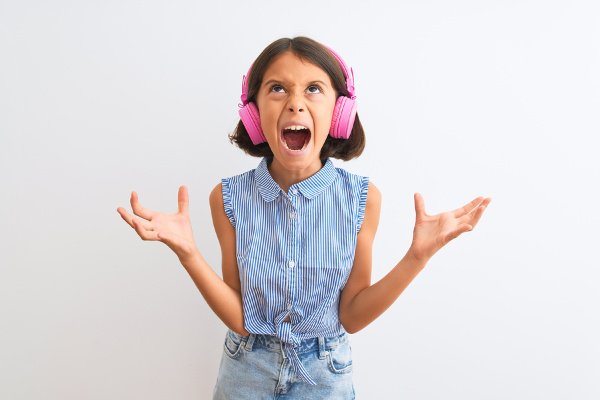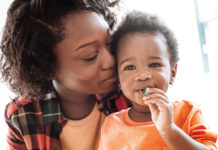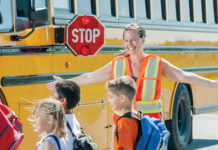
If your child has a tendency to overreact to the problems he or she faces each day, these size of the problem activities for kids will help!
Whether we realize it or not, much of our day is spent problem solving. Some of the problems we encounter are of our own doing, like over-sleeping or spilling a glass of water, but many of the challenges we face are either caused by others or just plain bad luck. Our inability to control these situations can be challenging, but learning how to handle our emotions in the face of things that unexpectedly happen to us can be incredibly helpful. Learning how to identify if a problem is small, medium, or big, and then regulating our emotions to ensure our reaction matches the size of the problems presented to us helps us stay calm and strategize more effectively. Keeping our emotions and reactions in check also prevents further problems and conflicts from arising, which is an important life skill for children to learn.
‘Size of the problem’ is a social skills concept designed to help kids evaluate how big or small the problems they encounter are, and how to choose their reactions accordingly. Keep reading for more problem-solving tips and size of the problem activities for kids!
‘Size of the Problem’ 101
The problems we encounter tend to fall into 3 main buckets:
Small problems are things we can usually solve on our own, and usually only result in a small reaction (or no reaction at all). Examples of small problems include breaking a pencil, not getting to stand at the front of the line at recess, or having someone bump into you at the grocery store.
Medium problems are those that require thought and help from others (usually a parent or teacher) to solve, and they usually result in a medium-sized reaction like crying, whining, saying the word ‘ouch!’, etc. Examples of medium problems include forgetting your homework, spilling a glass of milk, having a headache, and getting into a fight with a friend.
Big problems are serious events that require help from many people, including doctors, policemen, fire fighters, etc. Big problems warrant big reactions like screaming, yelling, crying, running away, etc. Examples of big problems include being really sick, breaking a bone, getting into a car accident, a house fire, losing a loved one, etc.
A great first step in teaching size of the problem to kids is to create a visual 3-point scale together. Explain what makes a problem small, medium, or big, and the appropriate reactions for each. Help your child recall different scenarios he or she has encountered for each bucket, and discuss whether he or she reacted appropriately. This blank size of the problem template on Teachers Pay Teachers is a great tool to use for this activity, and it comes with sample problem cards to assist with your discussion.
Learning how to match our reactions to the size of our problems takes time and practice. Once your child begins to grasp the idea that different emotions and reactions are expected for different sized problems, there are tons of fantastic size of the problem activities you can use to reinforce this concept, and we’re excited to share 8 of our favourites below!
8 Size of the Problem Activities for Kids
Problem Sizes, Emotions, and Reactions Teachers Pay Teachers
Designed for kids in elementary school, this comprehensive bundle helps kids understand the importance of matching their emotional reaction to the size of the problems they encounter. The activities in this set also address over-reactions and under-reactions, and can be used in small groups or as a large class lesson.
Size of the Problem Activities | Teachers Pay Teachers
If you’re looking for an all-in-one size of the problem activities pack you can use in the classroom, in therapy, or at home, I highly recommend this bundle! It comes complete with posters and visuals, as well as problem and reaction scenario cards, glyph worksheets and task cards, cut and paste worksheets, and journal scenario pages.
Size of the Problem BINGO | Teachers Pay Teachers
One of the best ways to teach kids is through play, and this is by far one of my favorite size of the problem activities for kids! With 20 BINGO cards included, this is a great classroom or small group activity.
Size Of The Problem Scoot Game | Teachers Pay Teachers
Perfect for kids in grades 2-4, these scenarios will get kids on their feet and moving around as they practice distinguishing between small, medium, and big problems.
Size of the Problem Puzzles | Teachers Pay Teachers
If you’re looking for size of the problem activities for kids in grades 3-5, this bundle comes with 2 sets of 18 puzzles in which kids match each problem scenario to the size of the problem/reaction. This is a great group activity, and encourages kids to consider their own problems and if their reactions to them are appropriate.
Size Of The Problem Google Slides & Boom Cards | Teachers Pay Teachers
If you’re looking for no-prep size of the problem activities kids can complete online, this is a great bundle to consider. Students are presented with different scenarios and drag and drop them into the correct size of the problem boxes.
Interactive Emotional Regulation Worksheets | Teachers Pay Teachers
If you’re looking for size of the problem activities for kids on the autism spectrum, this bundle has 2 social stories, a coloring page, a cut and paste activity, interactive worksheets, and problem situation cards.
Conflict Resolution Game | Counselor Keri
If you’re looking for games you can use with your kids or students to help them practice multiple social thinking skills at one go, this is a great option to consider! This conflict resolution game helps kids practice identifying the size of the problem and corresponding emotions, using calming strategies and assertive communication, and finding positive solutions to conflicts.
If your children and/or students struggle to distinguish between small, medium, and large problems – and the appropriate reactions for each – I hope this collection of size of the problem activities and games for kids proves useful to you!













